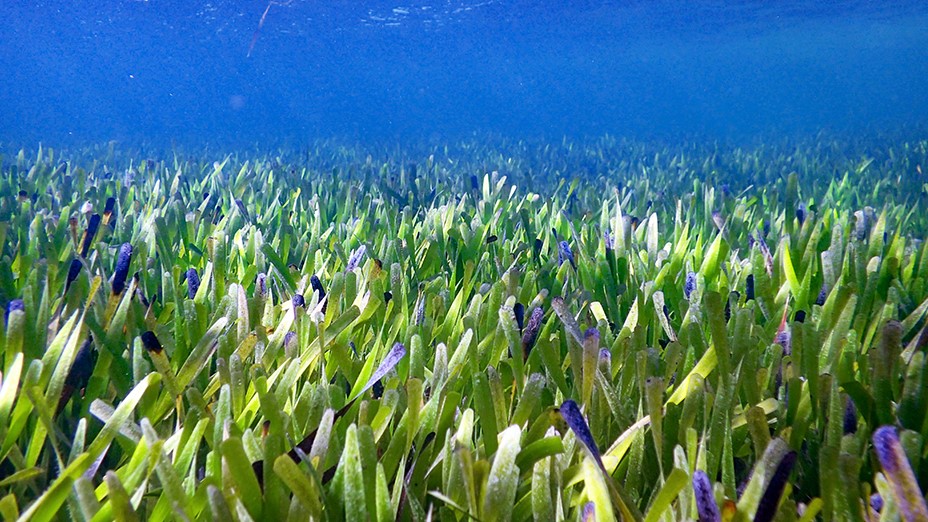
Name: "Immortal" seagrass meadow
Location: Shark Bay, Western Australia
Coordinates: -25.8829486505056, 113.90591540490992
Why it's incredible: The giant meadow formed from a single seedling.
The crystal-clear waters of Shark Bay are home to the world's largest plant: a seagrass meadow spanning 77 square miles (200 square kilometers) and stretching 112 miles (180 kilometers) from end to end. The shoots that make up the massive meadow all originate from one stem, which researchers estimate is at least 4,500 years old.
Researchers analyzed the genetic makeup of the seagrass at Shark Bay for the first time in 2022. They discovered that almost all the Poseidon's ribbon weed (Posidonia australis) — which grows in a network of meadows inside the bay — was genetically identical, indicating that the weeds belonged to one plant. Unlike other types of seagrass, which reproduce sexually, this meadow appeared to be continually cloning itself through an underground stem called a rhizome.
On the sandy seafloor, the self-cloning seagrass meadow forms clumps of grass that look like separate organisms, but underground, the shoots are connected to form "the largest clone in any environment on Earth," the researchers wrote in the study.
This means the Shark Bay seagrass dwarfs the previous record-holder: The second-largest clone on record is a 9-mile-long (15 km) meadow of Posidonia oceanica seagrass in the western Mediterranean Sea.
The meadow at Shark Bay is expanding through a process known as "horizontal rhizome extension," in which the plant grows stems that extend horizontally beneath the seafloor. These stems then grow vertical stems that develop shoots and leaves, which break through the sand to form seagrass. Based on the size and age of the meadow, researchers estimate it is expanding by around 6 to 14 inches (15 to 36 centimeters) per year — which is fairly quick compared with other self-cloning seagrass meadows, according to the study.
The meadow has remained relatively undisturbed for millennia, which has enabled it to reach colossal proportions. The clone could continue its creeping expansion for as long as it is left untouched, making it practically immortal, Elizabeth Sinclair, an evolutionary biologist at the University of Western Australia, previously told Live Science.







